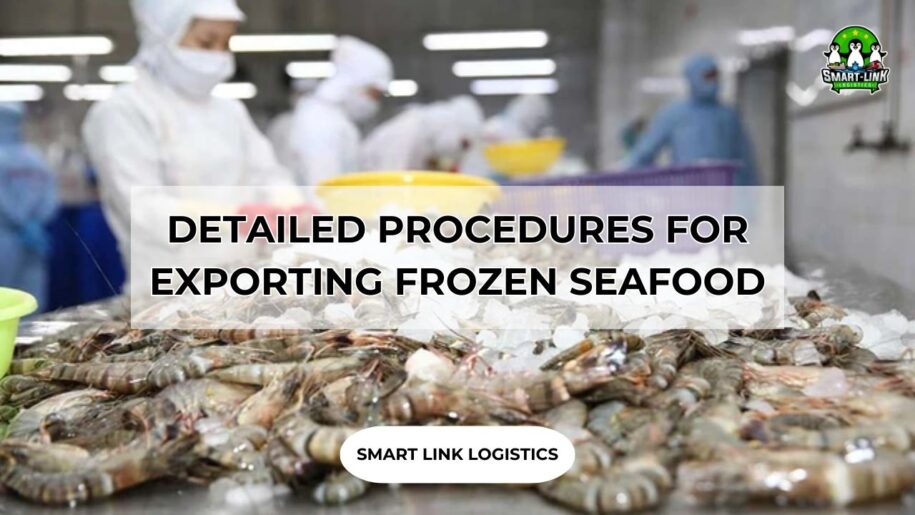
DETAILED PROCEDURES FOR EXPORTING FROZEN SEAFOOD
Exporting frozen seafood involves numerous essential documents and certificates. To minimize risks, exporters need to be aware of several important points. In this article, Smart Link will provide a detailed guide on the procedures for exporting frozen seafood.
1. Export policies for seafood
According to Circular No. 04/2015/TT-BTC dated February 12, 2015, issued by the Ministry of Agriculture and Rural Development:
- Seafood species not on the prohibited export list must undergo customs procedures. For species under CITES, follow the regulations of CITES Vietnam.
- Seafood listed under conditional export, if meeting the conditions specified in Appendix 2 of this Circular, must also undergo customs procedures. For CITES-listed seafood, comply with CITES Vietnam regulations.
- Goods listed in the seafood catalog must undergo quarantine before customs clearance as per the law.
2. Customs procedures for exporting frozen seafood
Check the export eligibility of frozen seafood
Before exporting and completing customs procedures, businesses need to verify if the frozen seafood is on the allowed export list according to Circular No. 04/2015/TT-BTC dated February 12, 2015, from the Ministry of Agriculture and Rural Development.
If the item is on the prohibited export list, it cannot be exported or go through customs procedures.
Determine the HS Code for frozen seafood
Businesses must identify the HS Code of the frozen seafood to facilitate proper classification and tax application. The HS Code for frozen seafood falls under Chapter 03 – Fish and crustaceans, molluscs, and other aquatic invertebrates.
Below are the HS Codes for some types of frozen seafood:

Register for animal quarantine
For fresh or frozen seafood, a Health Certificate (HC) is required. The quarantine registration dossier includes:
- Quarantine registration form.
- Animal quarantine requirements of the importing country (if any).
- Health certificate issued by the competent authority of the importing country (if any).
This dossier should be submitted to the Regional Animal Health Office or the Regional Animal Quarantine Sub-Department under the Department of Animal Health or the provincial veterinary management agency.
Complete customs procedures for exporting frozen seafood
When declaring customs for exporting frozen seafood, the following documents are required:
- Commercial invoice.
- Bill of lading.
- Commercial contract.
- Customs declaration.
- Packing list.
- Certificate of origin.
- Quarantine certificate.
These detailed procedures for exporting frozen seafood aim to provide businesses with useful information about seafood export processes.
We hope this information will be beneficial to you! At Smart Link, we offer services and solutions to help your goods reach the global market, with a commitment to dedicated service and customer support. We are proud to have over 13 years of experience in the transportation industry.
Hotline: + 84 903 354 157 to know more about our services

If you require assistance with international import and export of goods, please contact our team at Smartlink Logistics. We are available to provide you with professional guidance on our services and the necessary customs procedures.
SMART LINK: BEST SERVICE BEST YOU


































